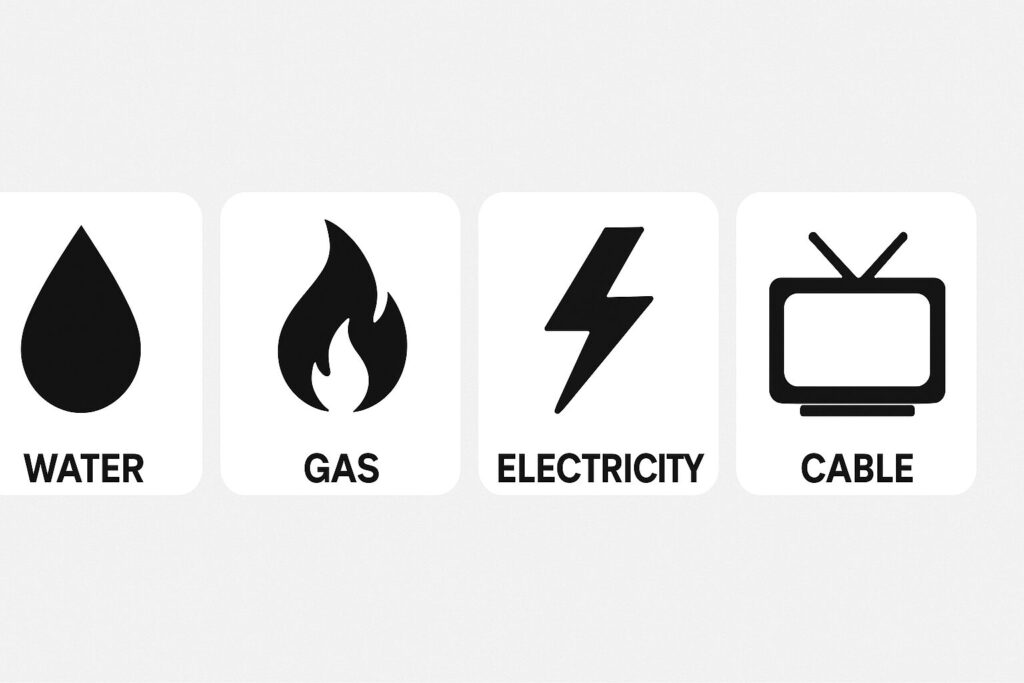
There’s a reason utility companies are often called the “tortoises” of the stock market: slow, steady, and always moving forward.
They may not be flashy, but when markets get rocky and the economy hits a speed bump, utility stocks often shine. For retirees looking for predictable income and dependable growth, utilities can be the anchor that keeps a portfolio from drifting off course.
But how exactly do utility companies make money—and why is it considered so reliable? Let’s break it down in plain English.
🔌 What Do Utilities Actually Do?
Utility companies provide the basic services we all need—electricity, water, natural gas, and sometimes even sewer and broadband. These services aren’t optional. People pay their utility bills whether times are good or bad.
That built-in demand gives utility companies an unusual level of stability. They’re not depending on shoppers splurging at the mall or tourists booking flights. They’re providing life’s essentials—things we can’t live without.
💰 The Regulated Revenue Model: Built-In Protection
Most utility companies operate in a regulated environment. That means they don’t just set prices however they want. Instead, they work with state or local regulatory agencies to determine how much they can charge customers.
Here’s why that’s good for both the company and investors:
- Regulators allow utilities to earn a fair rate of return.
If a utility invests $100 million in upgrading power lines, they’re allowed to earn a return on that investment—often around 8–10%—just like any other business. - Rates are adjusted for inflation and costs.
When fuel prices rise or infrastructure needs maintenance, utilities can often pass those costs along to customers through rate adjustments. - There’s little competition.
Utilities are often called “natural monopolies.” That means it doesn’t make sense to have two competing companies laying water pipes or power lines to the same neighborhood. As a result, most utilities enjoy exclusive rights to serve a given area.
This stable, regulated model leads to one of the most reliable cash flows in the corporate world.
🏗️ Capital Spending = Growth
You might think utilities are boring and slow-growing—but they’re constantly reinvesting in their infrastructure.
New transmission lines. Smart meters. Renewable energy projects. Grid upgrades. These capital expenditures give utilities a steady stream of investment opportunities—and regulators typically approve rate increases to cover these improvements.
That’s why you’ll often see utilities with growing earnings and rising dividends. They take the money from your power bill, reinvest it in better infrastructure, and then earn a steady return on that investment.
Over time, that leads to dependable growth—even if the overall economy is struggling.
📉 Recession-Resistant Revenue
During economic downturns, many businesses cut jobs, reduce operations, or suffer from declining demand.
Utilities? Not so much.
People still need to:
- Turn on the lights
- Take hot showers
- Cook dinner
- Heat their homes in winter
This makes utility companies recession-resistant. While their profits may not soar in boom times, they also don’t plummet in busts. That’s music to a retiree’s ears.
💵 Dividends That Keep Coming
One of the biggest attractions for retirees is the consistent income utilities offer.
Many utilities have been paying—and raising—dividends for decades.
Why? Because:
- They generate reliable cash flow
- They don’t need to reinvest every dollar
- Shareholders expect income
A well-run utility may offer a dividend yield between 3% and 5%, with annual increases to keep up with inflation. That’s far more dependable than most other sectors of the market.
🛡️ Utility Stocks: A Safe Harbor in a Storm
When inflation rises, interest rates shift, or Wall Street gets spooked, utilities often become a safe haven. Their stable earnings and predictable payouts help investors sleep better at night.
That’s not to say utilities are risk-free—no investment is—but compared to high-flying tech stocks or cyclical sectors like travel or retail, utilities offer a level of calm and consistency that’s hard to beat.
🚧 Real-Life Example: Jane’s “Boring” Portfolio
Jane, a 70-year-old retiree, decided to dedicate 25% of her portfolio to utilities. While her other investments bounced up and down, her utility holdings provided consistent dividend checks and modest growth.
When the market dipped 20%, Jane’s utility stocks held their ground—and the dividends kept rolling in. That’s the power of “boring” done right.
🧭 Final Thoughts: Dependability You Can Count On
In a world where headlines change by the hour and markets swing with every whisper, it’s refreshing to invest in something simple, essential, and steady.
Utility companies may not dominate the news or make people rich overnight, but for retirees looking to stay retired—with steady income and lower risk—they deserve a serious look.
This post is excerpted from my book:
Investing in Utilities: A Retiree’s Guide to “Natural Monopolies”
Available now at Amazon.com in paperback and eBook formats. It’s packed with real-life examples, easy-to-follow explanations, and step-by-step strategies to help you invest in one of the safest sectors out there.
Disclaimer:
This post is for informational purposes only and should not be considered investment advice. Always consult with a licensed financial advisor before making investment decisions based on your personal financial situation.